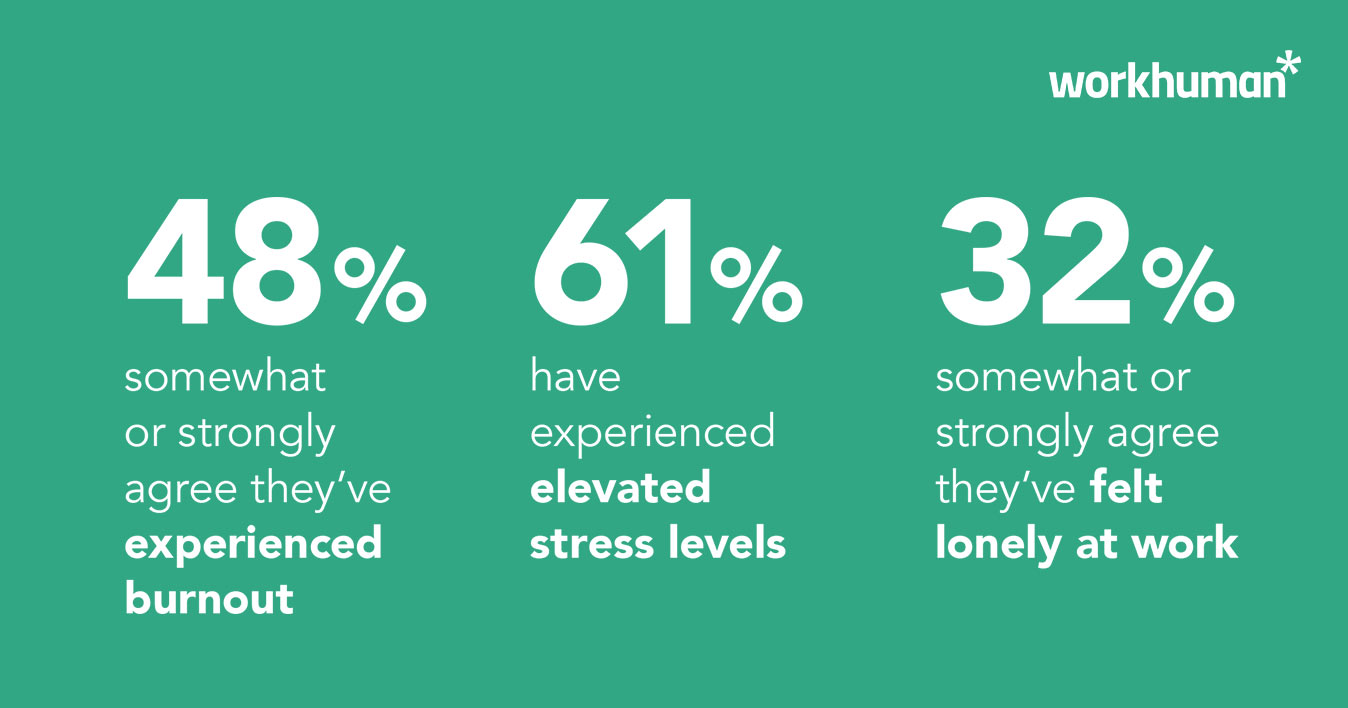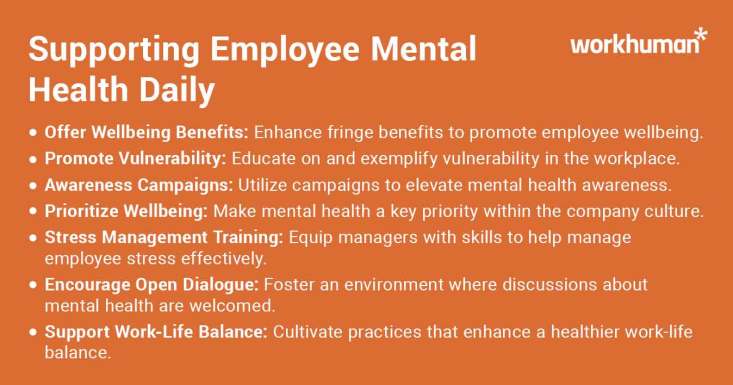Understanding the Value of Mental Health Days

During the pandemic, conversations about mental health in the workplace became significantly less stigmatized. The breakdown of the barriers and boundaries between work and home during those years brought this topic to the forefront as the American workforce collectively struggled through unprecedented trauma.
Since then, there has been somewhat of a cultural reset. Employees had the opportunity to reevaluate what is truly important in life and often saw how family and even their health were falling by the wayside.
As employees continue to advocate for themselves, their health, and their mental wellbeing, they can lead healthier and more productive lives, both inside and outside the office.
One notable way that employers can support their employee’s mental health is by encouraging them to take designated mental health days. Read on to understand the value of this type of time off, as well as additional steps companies can take to support their employees’ wellbeing both in and out of the office.
Recognizing the full scope of the issue
Speaking about mental health in the workplace isn’t just “talking more about our feelings.” Poor mental health can have a tangible, lasting impact on individual employees, company culture, and, ultimately, the bottom line. According to the World Health Organization, 12 billion working daysOpens in a new tab are lost to employees’ depression and anxiety, which costs the US a whopping trillion dollars per year in productivity loss.
Understanding how deeply poor mental health can affect employees inside and outside the office can help companies implement life-altering changes for their staff. Encouraging mental health days or allowing employees to take the day off work to address mental health challenges should be the first of these changes.
Employees should be instructed to stay home when they’re not feeling centered, happy, or able to be productive, just as much as they should when they’re feeling nauseous, congested, or fatigued. By making these comparisons, companies can demonstrate their stance that mental health is as important of a pillar of holistic wellbeing as physical health.
Looking closely at the impact of “hustle culture” and burnout
“Hustle culture” has gone from a buzzy phrase to a deeply ingrained expectation. People who choose not to participate in this constant overworking, overachieving cycle can be labeled “lazy” or “unmotivated” by bosses with unrealistic expectations for working hours and output. Not taking vacation days or working on nights and weekends are often glorified by companies that value profits over people.
This vicious cycle can lead to employees feeling not only exhausted but also undervalued, spent, and completely objectified. Over time, that degradation of their own self-worth can have harrowing effects on employees’ mental health.

This issue can easily spill over and affect how employees view themselves in other areas of life, destroying their self-esteem and robbing them of their ability to show up for their loved ones or the things they care about in their personal lives.
Ensuring that employees have reasonable workloads and flexible schedules and are encouraged to take time off to support their mental and physical health can be great ways to fight against burnout.
Download our exclusive report on how to build psychological safety.
Viewing rest as a right, not a reward
This issue often feels hard to address because of how engrained overworking is in American culture. When we exist in a country that views hyper-productivity as a measure of value and success, it can be hard to create a cultural shift toward viewing rest as both restorative and productive. However, learning to cultivate intentional rest can create life-altering shifts.
Both companies and employees need to remember that rest is not a luxury but a necessity for the human body and mind to function at full capacity. Rest enhances focus, productivity, and creativity and can also create a deeper sense of wellbeing and psychological safety at work.
For these reasons, mental health days should be viewed as a necessary right, just like more traditional sick days. Employees should not feel weak, judged, or fear retaliation for prioritizing their own mental health.
How to support your employees’ mental health every day
Besides encouraging employees to take mental health days, there are many things employers can do to foster better mental health in the workplace. Here are some small changes you can implement to help your employees feel safer, calmer, and more emotionally regulated at work:

Provide fringe benefits that support wellbeing
Community wellness programs, free yoga classes and meditation sessions, fitness reimbursements, extra benefits for therapy, and even subscriptions to apps like Calm can all help support employee health and wellbeing. Offering these benefits also says to employees that the company cares about them as complex, holistic beings, not simply worker bees only valued for what they can produce.
Train managers to manage employees’ stress levels
“Mental health struggles can manifest in different ways, such as inability to focus, absenteeism, outbursts, missing deadlines, etc. Employers should consider this when there are performance issues and find out if there is any additional support the employee may need.
It can also be overlooked that an employee can need an accommodation for a mental health issue, not just a physical health issue,” says Tamara Rasberry, HR manager at National Community Reinvestment Coalition
While we all understand that a person’s manager shouldn't be expected to double as a therapist, leaders can still interact with their team members with awareness, humanity, and compassion. Consistency and small, daily acts of kindness can make a world of difference for struggling employees.
Taking the time to ask questions about an employee's life outside of work can also help them feel more supported in their workplace and, over time, in their community at large.
Encourage open dialogue about mental health in the workplace
The first step to destigmatizing discussion around mental health is to encourage employees to speak openly about both their struggles and successes in managing these challenges. Through these discussions, leaders can hopefully devise new ways to support their staff and identify changes that can be made to alleviate stress for all involved.
Learn about the three tips to improve mental health in the workplace.
Foster a healthier work-life balance
It’s extremely important for employers to ensure that their employees have the time and mental energy to care for themselves and their responsibilities outside of work. Employees shouldn’t be tasked with more work than they can reasonably complete within their working hours, nor should they be expected to drop their personal responsibilities on nights and weekends to be available 24/7.
Conclusion
As conversations around mental health become increasingly normalized in society at large, it’s important that workplace rhetoric closely follows suit. Employees should be encouraged to take mental health days away from the office so that they can show up to work feeling refreshed, centered, and balanced as a holistic beings.
Companies that prioritize strong mental health initiatives for their employees can help create a better employee experience, reduce turnover, and help create happier, healthier communities.
About the author
Anna Picagli
As an RYT500 yoga instructor and a Reiki Master Teacher, Anna is an advocate for holistic wellness, especially within the workplace. She’s extremely passionate about the brain-body connection and exploring how mental and physical wellness intersect.
Anna has experienced firsthand how chronic stress, overworking, poor management, and other organizational issues can lead to extreme burnout. Knowing the impact that a toxic work environment can have on a person’s body, psyche, and general sense of well-being, she now works to direct others away from facing the same fate.
As Workhuman’s Senior Content Specialist, Anna is a regular contributor to Workhuman iQ reports and aims to create resources that company leaders can reference to help improve their culture and empower their employees, creating healthier workplaces for everyone.
In her free time, she’s an avid solo traveler, a voracious reader, and a seasoned home chef. You can learn more about Anna’s work on LinkedIn or through the Yoga Alliance.